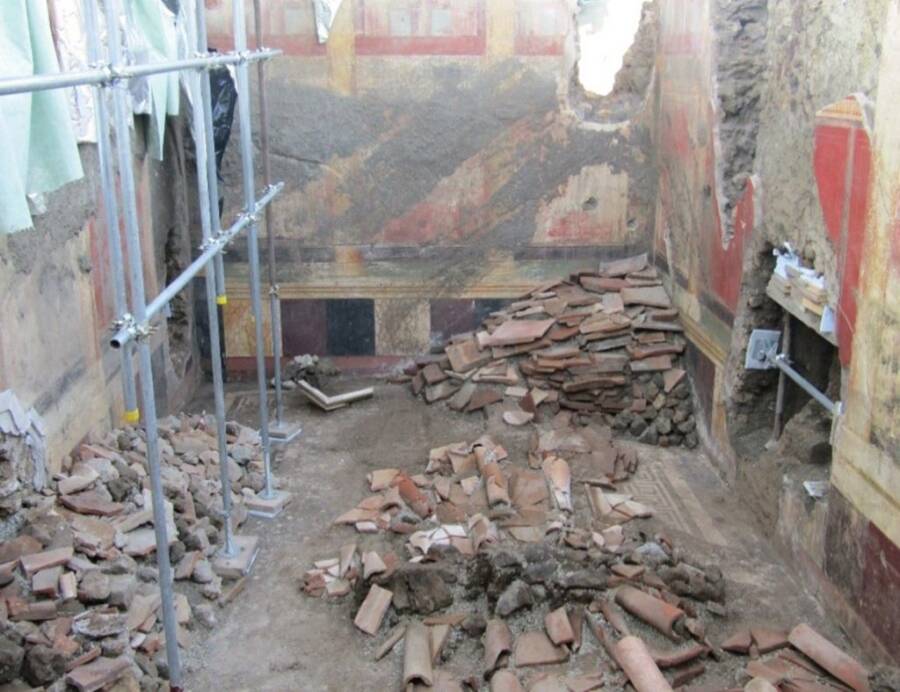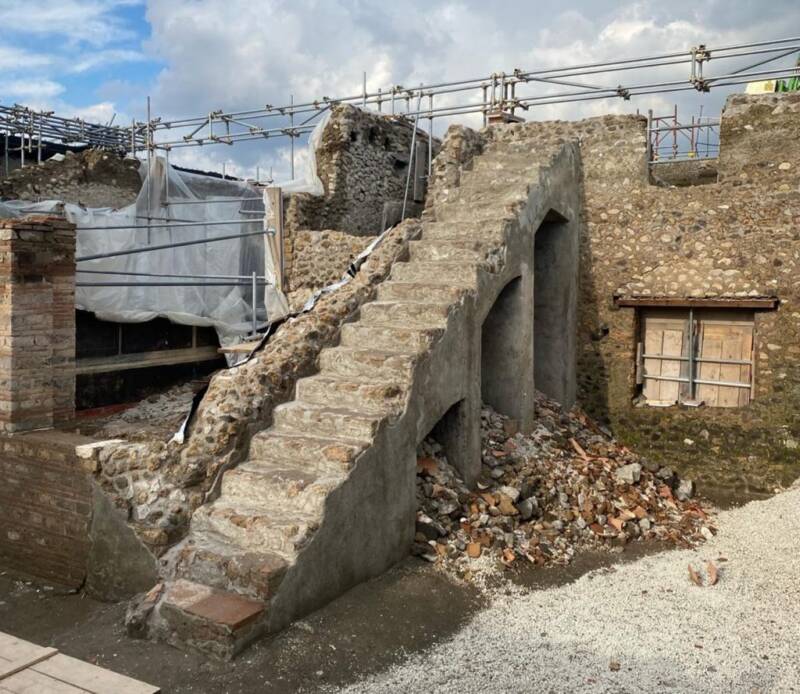Researchers have uncovered a large structure that was under construction at the time Mount Vesuvius erupted, shedding light on ancient Roman building techniques.

MiC Press and Communication OfficeThe excavated ancient domus in Pompeii.
Archaeologists have discovered the site of an ancient construction project in Pompeii, Italy. During the 79 C.E. eruption of Mount Vesuvius, this site was buried in ash, preserving it in its state of disrepair for over 2,000 years.
Now, researchers can see both the materials and methods the Romans used for this project, gaining new insight into ancient techniques used to build iconic structures like the Colosseum and the Pantheon.
The Discovery Once Lost In Ash

MiC Press and Communication OfficePottery remnants in Pompeii.
In 79 C.E., Mount Vesuvius erupted, burying the entire city of Pompeii in volcanic ash and killing about 2,000 people. Since the 18th century, the site has been an area of major historic and archaeological interest. It welcomes some 2.5 million tourists a year.
Recently, the Pompeii Archaeological Park teamed up with a group of researchers from the Massachusetts Institute of Technology (MIT) to excavate a construction site in Pompeii’s city center.
The site was once a large structure covered in art in the 4th Pompeian style, a form of wall painting that featured complex designs typically painted within frames. On one of the walls, archaeologists discovered a mural of “Achilles on Skyros.”
The site was under active construction when the volcano erupted on the afternoon of Aug. 24, 79 C.E. Researchers identified several construction tools, including jugs, lead weights, and iron hoes, as well as materials like roof tiles, tuff bricks, and mounds of lime and stones.
Nearby buildings also show signs of construction, likely pointing to the existence of a block-wide renovation project at the time.
According to Gabriel Zuchtriegel, director of the Archaeological Park of Pompeii, in a press release about the discovery, these renovations may have stemmed from damage sustained during “seismic tremors that struck the city” in 62 C.E.
Unveiling Roman Building Secrets

MiC Press and Communication OfficeAn excavated staircase found at the ancient construction site.
The presence of construction materials at the site excited researchers.
The discovery is “an extraordinary opportunity to experiment with the potential of close collaboration between archaeologists and materials scientists,” researchers wrote in statement.
By examining materials found at the scene, experts from MIT discovered that the Romans implemented an ingenious construction technique that allowed them to build structures more efficiently.
Typically, cement is created using water-soaked quicklime, sand, and aggregates. Because lime has a chemical reaction with water, it produces heat when mixed.
In Pompeii, workers did not pre-soak quicklime. Instead, they opted to mix the lime with pozzolanic sand first and then apply water shortly before construction. This meant that the mixture was still hot while it was being applied, ultimately shortening the amount of time it would take to dry.
Interestingly, researchers found that the Roman technique of plastering walls was much the same as it is today.
“It is a further example of how the small city of Pompeii makes us understand many things about the great Roman Empire, not least the use of cement works,” Zuchtriegel said in the press release. “Without cement we would have neither the Colosseum, nor the Pantheon, nor the Baths of Caracalla. The excavations underway in Pompeii offer the possibility of observing almost directly how an ancient construction site functioned.”
Researchers are hoping that future findings will unveil more Roman construction secrets, and even provide ideas for sustainable construction.
“Now we network between research institutions to study the construction know-how of the ancient Romans,” Zuchtriegel said. “Perhaps we can learn from them [and] think about sustainability and the reuse of materials.”
After reading about the construction site in Pompeii, discover 39 photos of Pompeii bodies frozen in time. Then, dive into the story of the raunchy graffiti found in Pompeii





